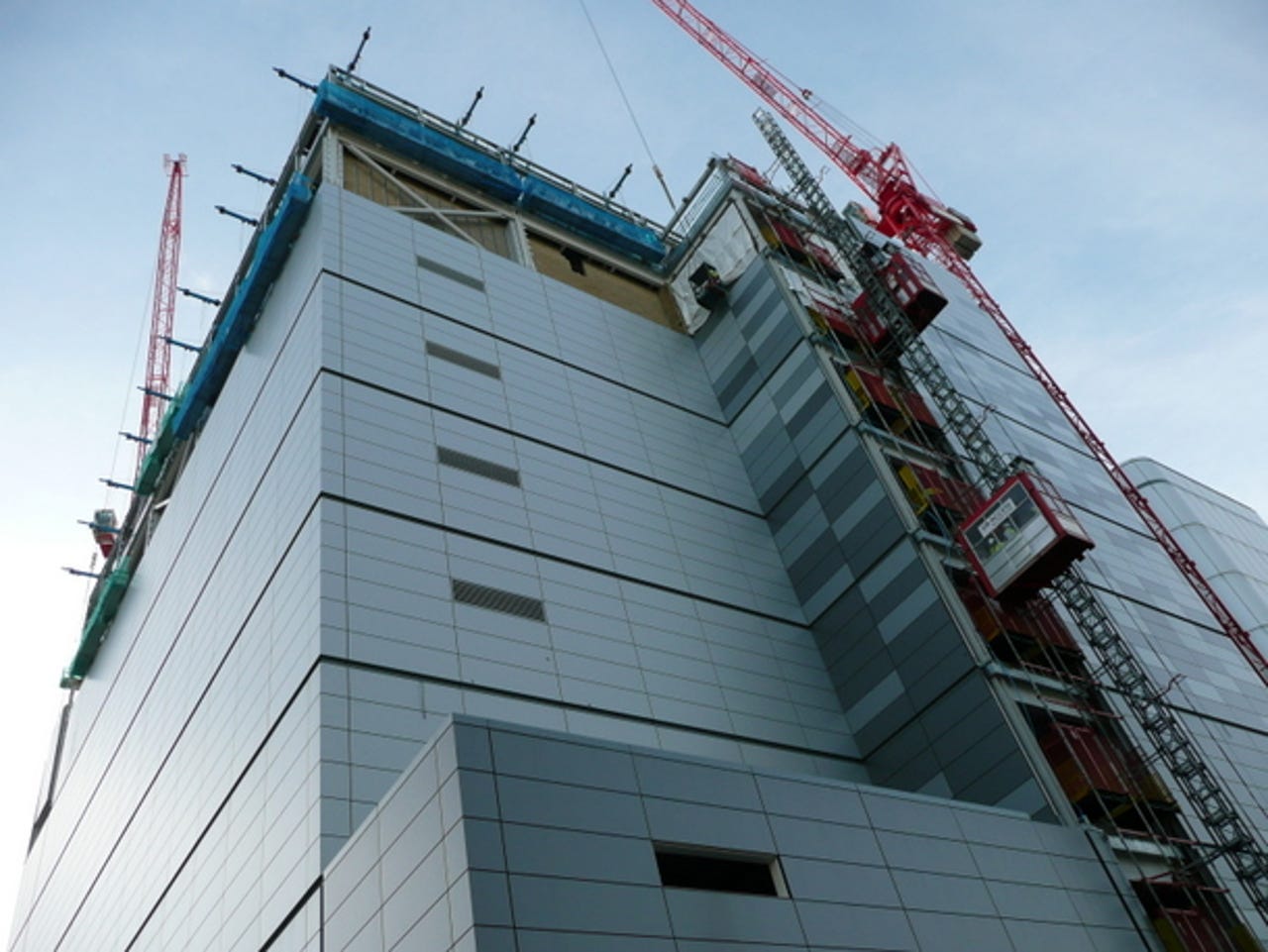Photos: The £80m datacentre that will heat London homes


How one datacentre's waste heat will keep 1,600 of the capital's homes and businesses toasty
If you've ever warmed your hands on the heat pumped from the back of a PC, then just imagine how toasty thousands of servers can get.
Datacentre firm Telehouse will tap the hot air generated by servers at this new nine-storey 19,000 square metre datacentre near London's Canary Wharf and pipe it into nearby homes and businesses.
The hot air will help heat about 1,600 premises, removing about 1,100 tonnes of CO2 emissions that would have otherwise been generated keeping the properties warm each year.
The £80m centre will be complete in March next year and will be used by a range of clients in the banking and telecoms sectors to co-locate their systems.
Photo credit: Nick Heath/silicon.com
Pictured above is one of the centre's data halls, which are spread over five floors and can hold a total of 2,120 server racks.
Unlike most datacentres, the building is multi-storey, meaning the floors have to be reinforced and are able to support one and a half tones of computer equipment per square metre.
When each data hall is full of servers the centre will need a constant supply of 15MW.
Photo credit: Nick Heath/silicon.com
Telehouse estimates that when the centre is fully up and running, the servers will generate 9MW worth of heat to warm neighbouring buildings.
The hot air generated by each server is sucked into vents on the datacentre floor and piped into a unit which transfers the heat into water.
The water is pumped to the roof where another unit then transfers the heat back to the air.
The hot air is then either pumped into the atmosphere by the fans pictured above or into the heating network for nearby properties.
Photo credit: Nick Heath/silicon.com
Here is the pipe that will carry the water warmed by the servers' excess heat to the transfer unit, situated below the roof fans.
Telehouse technical director for Europe, Bob Harris, said that when the datacentre is full it will produce enough heat to offset almost 10 per cent of the emissions generated by running the centre.
Photo credit: Nick Heath/silicon.com
Cables that supply the power to the datacentre run under the floor on the shelves pictured here.
The data halls are powered by multiple high voltage supplies, providing a backup supply if one fails.
Photo credit: Nick Heath/silicon.com
This is one of eight generators that provide power in the event of a catastrophic power failure.
Each generator can run for 24 hours before needing refuelling.
The generators will only be used if the multiple high voltage supplies that feed into each data hall fail.
Photo credit: Nick Heath/silicon.com
The centre has to minimise any noise to avoid disturbing the homes that neighbour the site.
These vents are lined with densely packed mineral wool that absorbs the majority of sound as it travels through them to the outside.
These vents are fitted on the ground floor next to the backup generators to allow them to be run for 24 hours per day without causing a disturbance.
Photo credit: Nick Heath/silicon.com